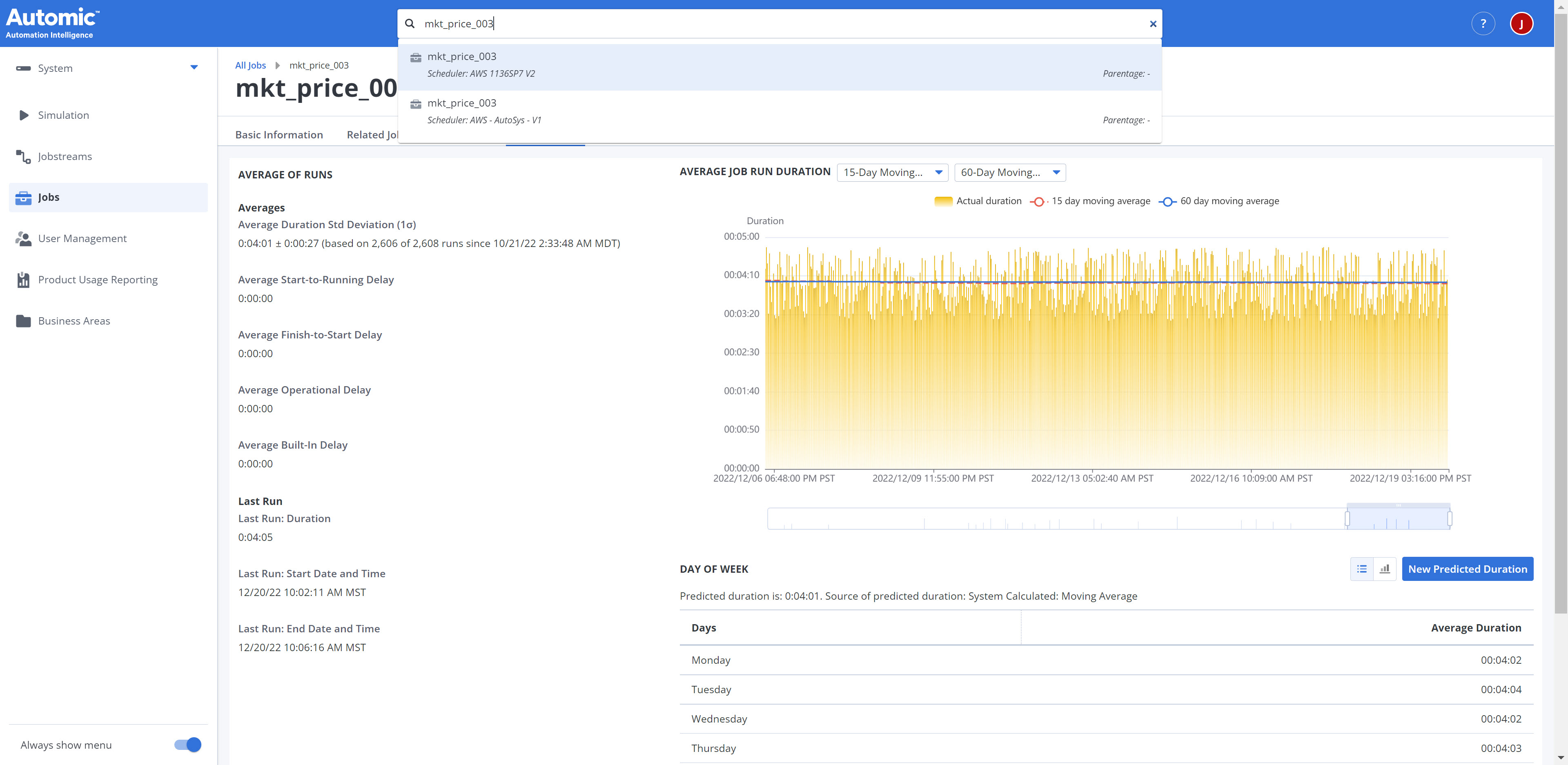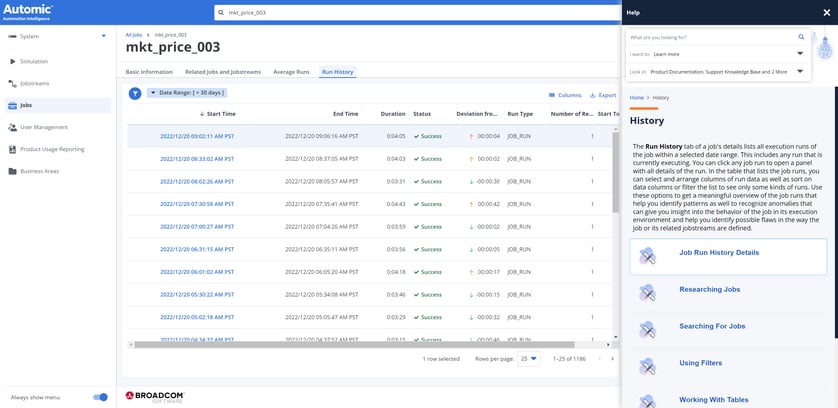January 5, 2023

What's New in Automic Automation Intelligence 6.4.4 and Why Upgrade

Written by: Jennifer Liharik
We are pleased to announce the release of Automic Automation Intelligence (AAI) 6.4.4. This release is a major step in the evolution of AAI’s web UI and delivers significant new functionality, including:
- The addition of global job search
- Job details pages
- Scheduler administration
- Business area support
- New and improved system monitoring
- Fully integrated context-aware help
Web User Interface New Features
Global Job Search, Job Details, and All Jobs
Global Job Search allows you to search for specific jobs and provides details and related information about the job. This is where you can find the job definition, historical runs, and the average duration of the job.
The Job Details page provides consolidated information about any job and is useful in understanding where the job fits within the job hierarchy, which job streams it appears in, whether it is in the critical path, and the percentage of time it's in the critical path. The All Jobs page provides robust and editable filters.

Global Search/Job Details - Average Runs tab
Integrated Help
A powerful new feature in this release, AAI’s Integrated Help functionality provides context-aware help across the product. You now have access to all relevant content such as product documentation, Broadcom Academy resources, Broadcom communities, training, and troubleshooting, all in one place.

Run History with Context-Sensitive Help
System Monitoring and Scheduler Administration
System Monitoring provides an overview of the status of your system and your schedulers. It is also the starting point to add, configure, and work with schedulers. With this release, the System Monitoring page has a new look and feel and replaces the old web page. You can now add new schedulers of all AAI’s supported types on this page.
Business Areas
With this release, there is an admin page to add/edit/delete business areas in the web UI. Business areas provide quick and easy access to job streams for teams and departments. You can organize them by the classification that is relevant to your organization, such as:
- Business unit
- Types of environment
- Types of schedulers
- Application areas
- Region
- …and more
Users and Domains
You can now add/edit/delete and filter Users and Domains in the web UI.
Headless Administration New Features
A parallel theme to our focus on the web UI is headless administrative access. Our goal is to offer 100% of admin functionality without the need for the UI. Most of this is available through RestAPI, but a few pieces remain. In this latest release, we added the ability to set SNMP and SMTP configuration settings through the command line.
See the AAI 6.4.4 Release Tech Docs for more information on these new features. Stay tuned for future enhancements to AAI’s web UI in the next release!
Check out the 6.4.4. Web UI Demo by head Automic Automation Intelligence PM Jennifer Chisik to see the great new features available today.

Jennifer Liharik
Jennifer is a senior product marketing manager for Automation solutions from Broadcom Software and enjoys helping customers gain business value from today's complex technology. Jennifer has worked as a product marketer, process improvement consultant, and strategic advisor in the B2B software, life sciences, retail,...
Other resources you might be interested in
Top 3 Trends Defining Network Observability in 2026
Discover the three specific trends that will define network observability in 2026. See how unified observability and predictive AI will shape the landscape.
Rally Office Hours: December 18, 2025
Rally Office Hours features an AI-driven artifact breakdown tool that creates child items from features/stories. The Q&A covers capacity planning, forecasting and burnup charts.
Why 2025 Shattered the Old Rules of Network Management
This post reveals the five key lessons network operations leaders learned in 2025—and how they need to respond to be successful in 2026.
The 2026 VMUG Report: Why Network Observability is the Heart of the New VCF Era
Get the top takeaways from the VMUG Cloud Operations and VCF User Experience Report 2026. See why network observability is key to successful VCF 9 migrations.
Automic Automation Cloud Integration: SAP S/4 HANA Application Jobs Integration
Simplify your SAP S/4HANA job management. Integrate with Automic Automation for central configuration, monitoring, and orchestration of all your enterprise jobs.
Automic Automation Cloud Integration: OpenSSH Integration
Master Open SSH automation. Use Automic Automation for centralized control, secure file transfer, command execution, and full job monitoring.
Rally Office Hours: December 11, 2025
Discover Rally's new Ancestors field, static query box deprecation, non-conflicting saves, plus a dashboard demo and query writing tips.
3 Questions I Expect You to Ask Me
Ask these questions to gain a deeper understanding of a vendor. Find a partner who can solve today’s challenges and prepare you for what’s next.
Carrier-Grade Network Observability: A Technology Brief for Telco Network Operations
Network Observability by Broadcom unifies data to provide contextual, AI-enabled insights for superior service availability, accelerated MTTR and improved MTTI, reduced operational costs, and the...